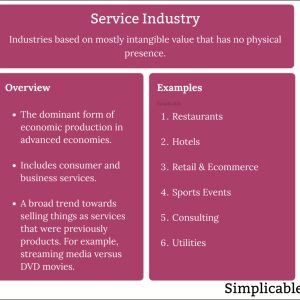What is a service level agreement(SLA)?
Editor’s Notes: Service level agreements have become essential for businesses of all sizes.
To help you understand SLAs and how they can benefit your business, we’ve put together this comprehensive guide.
In this guide, we’ll cover the following topics:
- What is a service level agreement (SLA)?
- Why are SLAs important?
- What are the key components of an SLA?
- How to negotiate an SLA
- How to manage an SLA
By the end of this guide, you’ll have a solid understanding of SLAs and how they can help you improve the performance of your business.
Service Level Agreement
A service level agreement (SLA) is a contract between a service provider and a customer that defines the level of service that the provider will deliver. SLAs are important because they help to ensure that both the provider and the customer are clear on what is expected of the service. Key aspects of SLAs include:
- Scope: The scope of an SLA defines the services that are covered by the agreement.
- Metrics: The metrics in an SLA define the specific measurements that will be used to assess the performance of the service.
- Targets: The targets in an SLA define the specific levels of performance that the provider is obligated to meet.
- Remedies: The remedies in an SLA define the actions that will be taken if the provider fails to meet the targets.
- Reporting: The reporting requirements in an SLA define how the provider will report on the performance of the service.
- Review: The review process in an SLA defines how the agreement will be reviewed and updated over time.
SLAs are an essential part of any service relationship. They help to ensure that both the provider and the customer are clear on what is expected of the service, and they provide a framework for resolving any disputes that may arise.
Scope
The scope of an SLA is one of the most important elements of the agreement. It defines the boundaries of the service that the provider is obligated to provide. Without a clearly defined scope, it can be difficult to determine whether or not the provider is meeting its obligations.
When defining the scope of an SLA, it is important to consider the following factors:
- The specific services that are being provided
- The level of service that is required
- The duration of the agreement
Once the scope of an SLA has been defined, it is important to ensure that both the provider and the customer understand the terms of the agreement. This can be done by reviewing the SLA carefully and asking questions about any unclear terms.
Here are some examples of scope statements that might be included in an SLA:
- The provider will provide email support to the customer.
- The provider will provide hardware maintenance for the customer’s servers.
- The provider will provide cloud computing services to the customer.
By clearly defining the scope of an SLA, both the provider and the customer can be sure that they are on the same page about what is expected of the service.
Metrics
Metrics are an essential part of any service level agreement (SLA). They provide a way to measure the performance of the service and to ensure that the provider is meeting the customer’s expectations. Without metrics, it would be difficult to determine whether or not the provider is meeting its obligations under the SLA.
- Availability: Availability is a measure of how often the service is available to the customer. It is typically expressed as a percentage, such as 99.9%.
- Performance: Performance is a measure of how well the service performs when it is available. It can be measured in terms of speed, throughput, or latency.
- Reliability: Reliability is a measure of how often the service fails. It is typically expressed as a mean time between failures (MTBF) or a mean time to repair (MTTR).
- Security: Security is a measure of how well the service protects the customer’s data and information. It can be measured in terms of the number of security breaches or the number of unauthorized access attempts.
These are just a few of the many metrics that can be used to measure the performance of a service. The specific metrics that are included in an SLA will vary depending on the nature of the service and the customer’s requirements.
Metrics are an essential part of any SLA. They provide a way to measure the performance of the service and to ensure that the provider is meeting the customer’s expectations.
Targets
Targets are an essential part of any service level agreement (SLA). They define the specific levels of performance that the provider is obligated to meet. Without targets, it would be difficult to determine whether or not the provider is meeting its obligations under the SLA.
- Availability: The availability target defines the percentage of time that the service must be available to the customer. For example, a provider might agree to an availability target of 99.9%, which means that the service would be available to the customer 99.9% of the time.
- Performance: The performance target defines the level of performance that the service must meet. For example, a provider might agree to a performance target of 100 milliseconds for a web application. This means that the web application would have to respond to requests within 100 milliseconds 95% of the time.
- Reliability: The reliability target defines the number of times that the service can fail within a given period of time. For example, a provider might agree to a reliability target of 99.99%, which means that the service could only fail once every 10,000 hours.
- Security: The security target defines the level of security that the service must provide. For example, a provider might agree to a security target that requires the service to be compliant with ISO 27001.
Targets are an essential part of any SLA. They provide a way to measure the performance of the service and to ensure that the provider is meeting the customer’s expectations.
Remedies
Remedies are an essential part of any service level agreement (SLA). They define the actions that will be taken if the provider fails to meet the targets that are specified in the SLA. Without remedies, the SLA would be essentially unenforceable.
There are a variety of different remedies that can be included in an SLA. The most common remedies include:
- Service credits: Service credits are a type of financial compensation that is paid to the customer if the provider fails to meet the targets that are specified in the SLA. The amount of the service credit is typically based on the severity of the failure and the impact that it has on the customer.
- Contract termination: Contract termination is the most severe remedy that can be included in an SLA. It allows the customer to terminate the SLA if the provider fails to meet the targets that are specified in the SLA.
The remedies that are included in an SLA should be carefully negotiated between the provider and the customer. The remedies should be tailored to the specific needs of the customer and the nature of the service that is being provided.
Remedies are an important part of any SLA. They provide the customer with a way to enforce the SLA and to ensure that the provider meets the targets that are specified in the SLA.
Reporting
Reporting is an essential part of any service level agreement (SLA). It allows the customer to track the performance of the service and to ensure that the provider is meeting the targets that are specified in the SLA. Without reporting, the customer would have no way of knowing whether or not the provider is meeting its obligations.
- Regular reporting: Regular reporting provides the customer with a regular update on the performance of the service. This can be done on a daily, weekly, or monthly basis. The report should include information on the availability, performance, reliability, and security of the service.
- Incident reporting: Incident reporting provides the customer with information on any incidents that have occurred during the reporting period. This can include information on the cause of the incident, the impact of the incident, and the steps that were taken to resolve the incident.
- Trend reporting: Trend reporting provides the customer with information on the long-term performance of the service. This can be used to identify trends in the performance of the service and to make predictions about future performance.
- Custom reporting: Custom reporting allows the customer to request specific reports from the provider. This can be used to obtain information on specific aspects of the performance of the service.
Reporting is an important part of any SLA. It allows the customer to track the performance of the service and to ensure that the provider is meeting the targets that are specified in the SLA.
Review
The review process is an essential component of any service level agreement (SLA). It ensures that the SLA remains relevant and effective over time. Without a regular review process, the SLA may become outdated and fail to meet the needs of the customer or the provider.
The review process should be defined in the SLA itself. It should include the following elements:
- The frequency of the review
- The participants in the review
- The process for making changes to the SLA
The frequency of the review should be based on the nature of the service and the customer’s needs. For example, a complex SLA with a long term may need to be reviewed more frequently than a simple SLA with a short term.
The participants in the review should include representatives from both the customer and the provider. This ensures that both parties have a voice in the review process and that the SLA is updated to meet the needs of both parties.
The process for making changes to the SLA should be clearly defined. This process should be flexible enough to allow for changes to be made quickly and easily, but it should also be formal enough to ensure that changes are made in a controlled and orderly manner.
The review process is an important part of any SLA. It ensures that the SLA remains relevant and effective over time. By following the steps outlined above, you can create a review process that meets the needs of your organization.
Here are some examples of how the review process can be used to improve the effectiveness of an SLA:
- A customer may request a change to the SLA to reflect a change in their business needs.
- A provider may request a change to the SLA to reflect a new service offering.
- Both the customer and the provider may agree to change the SLA to improve the performance of the service.
The review process is an essential tool for ensuring that an SLA remains effective over time. By regularly reviewing the SLA and making changes as needed, you can ensure that the SLA meets the needs of both the customer and the provider.
Service Level Agreement FAQs
Service level agreements (SLAs) are an essential part of any service relationship. They help to ensure that both the provider and the customer are clear on what is expected of the service, and they provide a framework for resolving any disputes that may arise.
Here are some of the most frequently asked questions about SLAs:
Question 1: What is a service level agreement (SLA)?
A service level agreement (SLA) is a contract between a service provider and a customer that defines the level of service that the provider will deliver.
Question 2: Why are SLAs important?
SLAs are important because they help to ensure that both the provider and the customer are clear on what is expected of the service. They also provide a framework for resolving any disputes that may arise.
Question 3: What are the key components of an SLA?
The key components of an SLA include the scope of the agreement, the metrics that will be used to measure the performance of the service, the targets that the provider is obligated to meet, the remedies that will be available if the provider fails to meet the targets, and the reporting requirements.
Question 4: How do I negotiate an SLA?
When negotiating an SLA, it is important to consider the following factors: the scope of the agreement, the metrics that will be used to measure the performance of the service, the targets that the provider is obligated to meet, the remedies that will be available if the provider fails to meet the targets, and the reporting requirements.
Question 5: How do I manage an SLA?
Once an SLA has been negotiated, it is important to manage it effectively. This includes tracking the performance of the service against the targets that are specified in the SLA, and taking action if the provider fails to meet the targets.
Question 6: What are the benefits of using an SLA?
There are many benefits to using an SLA. These benefits include improved communication between the provider and the customer, reduced risk of disputes, and improved service quality.
SLAs are an essential part of any service relationship. By understanding the basics of SLAs, you can ensure that you are getting the most out of your service agreements.
Transition to the next article section
Service Level Agreement Tips
Service level agreements (SLAs) are an essential part of any service relationship. They help to ensure that both the provider and the customer are clear on what is expected of the service, and they provide a framework for resolving any disputes that may arise.
Here are five tips for creating and managing effective SLAs:
Tip 1: Define the scope of the SLA clearly.
The scope of the SLA should define the services that are covered by the agreement, the level of service that will be provided, and the duration of the agreement.
Tip 2: Establish clear performance metrics.
The SLA should include clear performance metrics that will be used to measure the performance of the service. These metrics should be specific, measurable, achievable, relevant, and time-bound (SMART).
Tip 3: Set realistic targets.
The targets that are set in the SLA should be realistic and achievable. If the targets are too ambitious, the provider may not be able to meet them, which could lead to disputes.
Tip 4: Include clear remedies.
The SLA should include clear remedies that will be available to the customer if the provider fails to meet the targets. These remedies may include service credits, contract termination, or other penalties.
Tip 5: Monitor and report on performance regularly.
The performance of the service should be monitored and reported on regularly. This will allow the customer to track the performance of the service and to identify any areas where improvement is needed.
By following these tips, you can create and manage effective SLAs that will help to ensure that you are getting the most out of your service agreements.
Conclusion:
SLAs are an essential part of any service relationship. By following the tips outlined in this article, you can create and manage effective SLAs that will help to ensure that you are getting the most out of your service agreements.
Conclusion
This article has explored the topic of service level agreements (SLAs) and highlighted their importance in ensuring the effective delivery and management of services. SLAs define the level of service that a provider is obligated to deliver, establishing clear expectations and metrics for measuring performance.
By carefully crafting and managing SLAs, organizations can foster a collaborative and transparent relationship with their service providers, minimizing the risk of misunderstandings and disputes. SLAs serve as a valuable tool for ensuring that services align with business objectives, driving continuous improvement and maximizing the value derived from service relationships.
Youtube Video:






